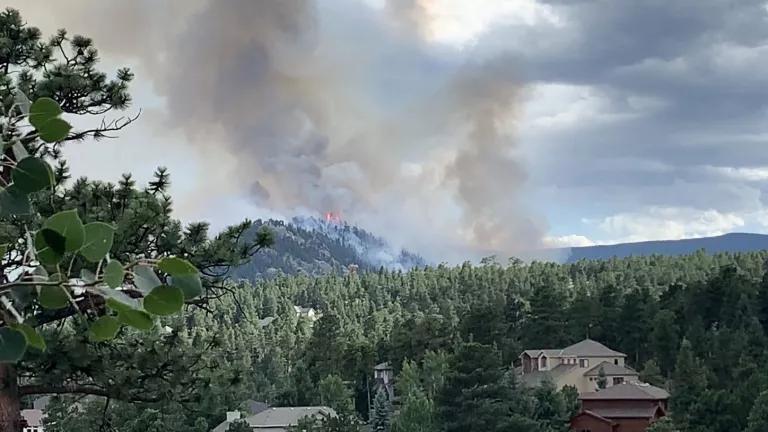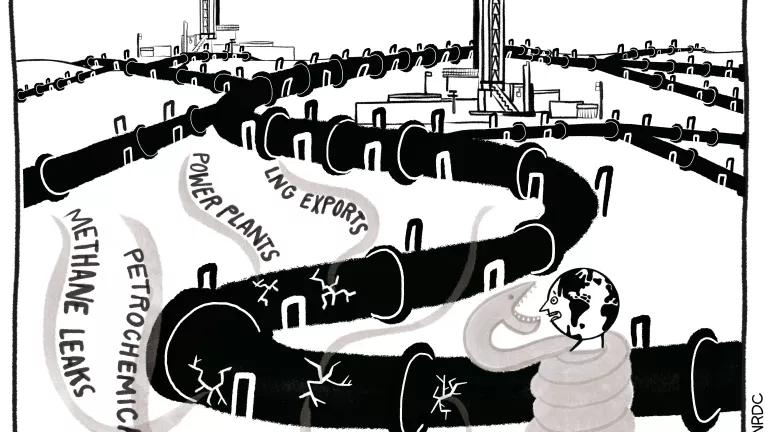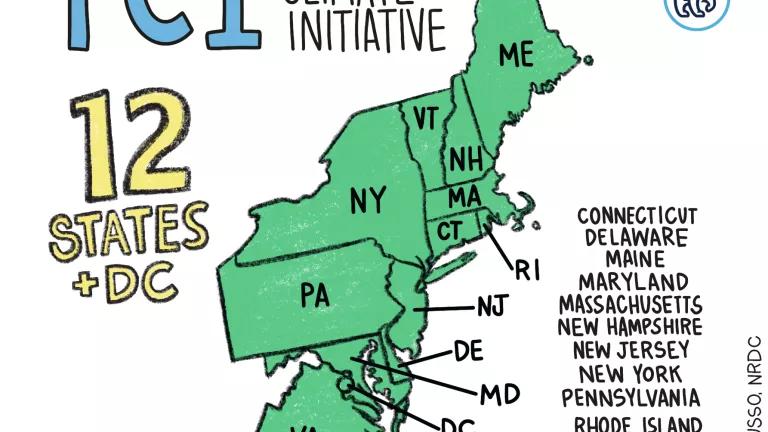CO Wildfires & Extreme Weather Require Climate Action Now

Here in Colorado, we have already experienced more than seventy 90 degree days this year—and it’s only September. Following the most recent heat wave, the Chinook winds ushered in a temperature drop from above 100 degree highs to below freezing with snow. While some temperature fluctuations are common for late summer in Colorado, the severe change we saw last week was a shocking and ominous sign of how climate change will impact our state.
The sustained high temperatures we saw before this drop exacerbate drought and dry forest conditions that can increase the risk of wildfires—like the Pine Gulch fire, which has become the largest in state history. Mixed with smoke from wildfires across the West, drought, and our usual air pollution, these wildfires result in some of the poorest air quality in the country. The effects of poor air quality are even greater in the midst of a global pandemic caused by a virus that affects our ability to breathe—all of which disproportionately impacts low-income communities and communities of color.

We’ve known for decades that climate change will make extreme weather more frequent and intense. Yet, for too long, we’ve acted like these threats will happen far into the future and not acknowledged the ways these threats intersect with systemic racism, economic inequality, and other factors. Unfortunately, it’s becoming painfully clear that climate change is here. It’s no longer just a threat to future generations, but for all of us today, especially low-income communities and communities of color. We no longer have the luxury of time for slow, incremental policy solutions. All of us—and especially those of us with respiratory illnesses, who work outside, or who live in parts of our state with already poor air quality—need climate action now.
The good news is that Colorado legislation calls for reducing carbon pollution by at least 90 percent of the levels of statewide greenhouse gas emissions that existed in 2005 by 2050. Meeting this threshold will require tackling every polluting sector, from the cars we drive to the homes we live in to the electricity we use to power our lives. While the movement in favor of these actions is growing—from young people to health professionals to social justice advocates—the fossil fuel industry and their affiliated lobbyists are voraciously campaigning to delay climate action. We cannot let the profit of a few individuals dictate the survival of millions.
It is essential that we quickly and deeply address both the causes and effects of climate change. Colorado has already set ambitious climate goals, but we must enact policies that will effectively and comprehensively combat our changing climate. It’s not enough to simply set targets; we must be able to explain the steps we will take today, tomorrow, and next year to ensure our goals become our reality.
The Governor’s Office and state agencies must put in place enforceable, equitable, and ambitious policy solutions. These solutions must include almost complete decarbonization of the electric sector, which means further accelerating coal plant retirements beyond what’s already been announced and steadily scaling up renewable energy such as wind and solar power.
Colorado must also continue working on extensive electrification of the transportation sector, meaning powering our cars, trucks, and other forms of transportation with electricity rather than gas. We already put in place low-emission vehicle (LEV) and zero-emission vehicle (ZEV) programs to ensure Coloradans can find electric car options at in-state dealerships and joined a clean truck memorandum of understanding that commits Colorado and a dozen other states to getting more electric trucks on the road. Now, we need to further invest in electric vehicle charging infrastructure and make sure that public transit is available, affordable, and efficient for all.
We must also address the emissions that come from homes, offices, and other buildings that rely on fossil fuels that pollute the air inside—a serious health threat that is especially dire for people living in homes with inefficient appliances and people most vulnerable to dirty air, such as children. There are already conversations going on about policies such as benchmarking, meaning measuring and tracking energy use over time, and performance improvements, meaning upgrading the most polluting appliances to more efficient and often electric versions that can do the same job, and we will soon have opportunities to put these ideas into action as legislation and administrative rulemakings.
As we explore and implement these solutions and many more, one thing is clear: the time for incremental change has passed. We are calling on our state leaders to get to work implementing the policies we need to radically reduce carbon emissions and pollution, especially for the low-income communities and communities of color that experience the worst of these crises. Delaying action will only lead to more extreme weather and wildfires, to dirtier air, and to other climate change impacts that put the lives of all Coloradans at risk.





